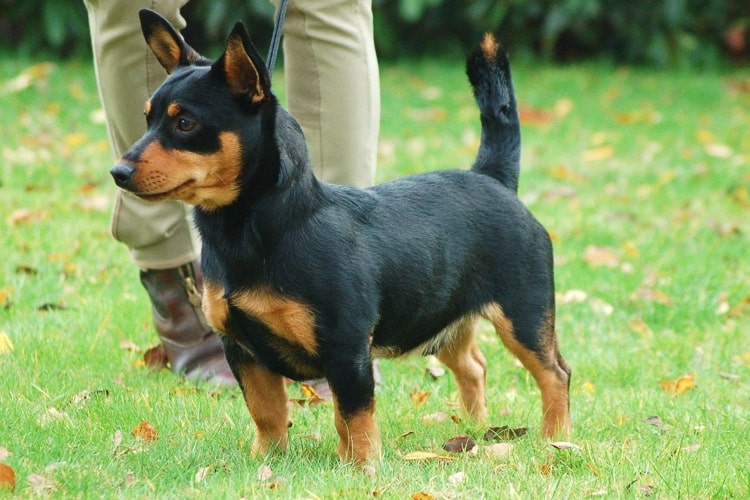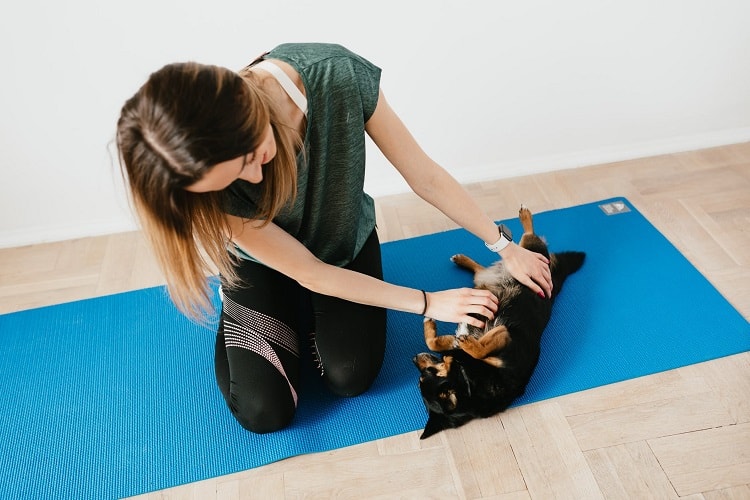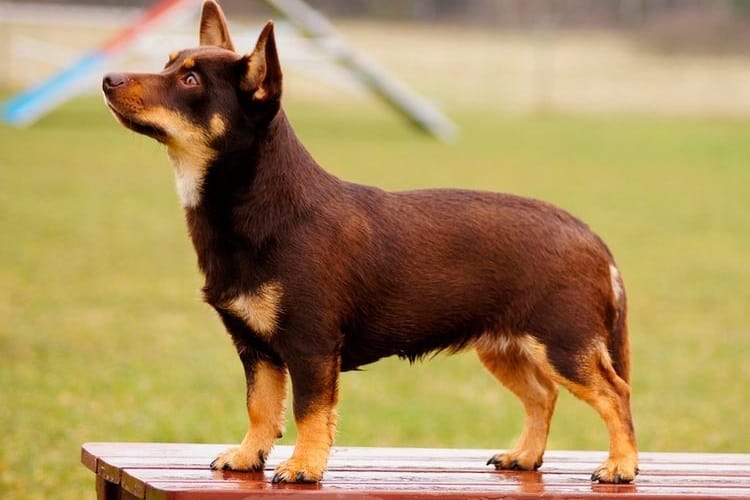If you’re planning to buy a Lancashire heeler, you must learn everything that will help you raise this breed and keep it happy and healthy.
This dog may look like a small and cuddly pet, but you shouldn’t underestimate its physical prowess, intelligence, and hunger to learn new tasks and tricks.
This dog will not laze around your house. Instead, it will keep finding new things to do and learn. If you want an active, energetic dog, it will surely be a delight to have around at home.
Beyond a Lancashire heeler’s temperament and behavior, you must also consider its price, training, grooming, exercise needs, lifespan, and more.
This guide dives deep into the characteristics of this breed—including how much you will need to shell out to buy or adopt one—so you can make an informed decision.
Let’s get to it!
Puppy Price
Lancashire heelers are a small dog breed, so they are relatively affordable. Pregnant and lactating dogs do not need much food, nor are they prone to issues during pregnancy or delivery.
Thus, their breeders do not incur high vet bills and can sell litters at low rates. The litters do not need much space during their first few weeks of life, so maintenance costs are also low.
You can get a Lancashire heeler puppy from a qualified, ethical breeder for around $1,000 to $1,500.
Once you bring home your Lancashire heeler, you will need to spend around $650 for its first batch of food, some toys, a dog bed, a crate, medical care, vaccinations, pet insurance, and other pet supplies.
Rescue Price
Adopting a Lancashire heeler is much cheaper than buying one from a breeder.
You can adopt one from a local animal shelter or rescue that specializes in this breed for around $300. This amount goes towards covering the expenses of caring for the dog before adoption.
Checkout our Complete Guide to Breeders:
We wrote the definitive guide on finding, selecting, and dealing with dog breeders. This will give you the smarts and confidence to save you money, time and heartache. Read On…
Temperament
Lancashire heelers are loving and loyal dogs that are easy to socialize with other dogs and young children.
They can be slightly wary of strangers but are usually playful and friendly and eager to please their owners. They make for wonderful family dogs that the household will love for many years.
Lancashire heelers are usually well-behaved and happy-go-lucky dogs—they do not exhibit aggressive tendencies. But their terrier nature makes them slightly stubborn and willful.
Their guarding instincts are limited. However, they have terrier and herding instincts, so they may try to take charge of your other pets, which can create issues in your household. You will need to be careful about introductions and supervise interactions early on to prevent fights from breaking out.
If you own livestock, you can train your Lancashire heeler to herd them. And if you have any kind of pest infestation, it will be able to drive them away.
A Lancashire heeler is intelligent, alert, versatile, and quick to learn new tasks and tricks. It can adapt to different situations with ease.
Because it is a working breed, it needs a good amount of mental and physical stimulation. Or else it can become bored, unhappy, and even destructive if left alone without anything to do.
As they form a strong bond with their families, Lancashire heelers may also experience separation anxiety. These dogs are best suited for families where there is always someone at home throughout the day.
They also tend to bark a lot. You can nip this tendency in the bud through obedience training and positive reinforcement.
This sturdy little breed will rarely show signs of distress or discomfort, even if it is ill. So as a pet owner, you need to watch it carefully for health issues, especially as your Lancashire heeler reaches old age.
Origin
The history of the Lancashire heeler dates back to the 17th century. However, its exact origin is shrouded in mystery.
A type of Welsh corgi called the butchers’ dog was used for herding and driving livestock from Wales to the markets in the Ormskirk area in Lancashire. This small black and tan dog was common in Ormskirk. It is believed to be a cross of the Welsh corgi and Manchester terrier, and became what we know now as a Lancashire heeler.
Lancashire heelers were bred for generations as farm dogs that herded cattle and caught rats and rabbits. Over time, these small friendly dogs gained popularity as family pets even while they were working dogs.
Later on, their numbers started dwindling, and the breed began to disappear. Only a few dogs remained, and they were at risk of several inherited diseases.
So in 1970, Gwen Mackintosh and other breed enthusiasts created the Lancashire Heeler Club. They worked to promote and conserve the Lancashire heeler and prevent it from completely disappearing.
In 1981, the Lancashire heeler was recognized by The Kennel Club in the UK. In 2003, The Kennel Club deemed it a vulnerable native breed.
Today, this breed is quite popular worldwide and is a common sight at obedience, agility, rally, and herding events. It is particularly popular in the US, Sweden, Australia, and the Netherlands.
Dimensions
Lancashire heelers are rather small in size—full-grown adults reach 10 to 12 inches in height. They are also incredibly light. Most dogs of this breed have an average weight of 9 to 17 pounds.
However, they are prone to obesity, so owners must be alert on that front.
Grooming
The sturdy and powerful Lancashire heeler has a weather-resistant coat that suits most climates.
Its short, flat, dense, and hard coat is waterproof and requires minimal maintenance. In terms of grooming, all you need to do is brush its coat lightly and give it an occasional bath.
Trim its nails at least once a month with a nail clipper or grinder to prevent overgrowth, splits, and cracks. Check its ears regularly to avoid a buildup of wax and debris and keep painful ear infections at bay.
As with all dogs, their teeth must be brushed at least once a week. This will prevent bacteria and tartar buildup and keep your dog’s teeth healthy.
Lifespan
The Lancashire heeler has an average lifespan of 12 to 15 years and is a generally healthy breed.
Owners must watch out for a few hereditary medical conditions such as:
- Primary lens luxation (PLL)
- Collie eye anomaly (CEA)
- Persistent pupillary membrane (PPM)
- Hereditary cataracts
- Patella luxation
PLL in this breed was discovered in 2006, but extensive efforts on the part of breeders and research by animal health organizations have helped reduce the incidence of this inherited eye disease.
Nonetheless, it is essential to make sure that the eyes of a pup and its parents are tested to detect and prevent this disease early on.
Helpful Dog Health Resource:
Important Note: Few things are more important than our Health. It's no different with our Dogs Health. Some visits (and money) to your vet can be avoided if only you know what to do when your dog is ill. The Ultimate Guide to Dog Health is the answer. No dog owner should be without this handy guide. It's no substitute for your vet but it will Save you Money and Heartache. This Dog Health Guide will help you quickly understand and recognize symptoms before they become a serious problem for your dog. Click Here to see if you agree.
How Much Activity Does A Lancashire Heeler Need?
Lancashire heelers have medium to high energy levels, so they need plenty of daily exercises to stay happy and healthy.
You’ll find they’re always up for a walk or a good romp in the backyard. They also need a good amount of regular human interaction and mental stimulation.
You can allow your dog to play in your fenced backyard or take it for walks once or twice a day to get some exercise in. Outdoor activities such as hiking, swimming, and retrieving balls or flying discs can also be great for expending excess energy.
If you live in an apartment, you can play games such as hide-and-seek indoors or chase a ball rolled along the floor. You can also enjoy short walks with your pet in the hallways.
Another great way to give your dog some exercise is training it for sports such as agility, obedience, and rally events.
Lancashire Heeler Nutrition Guide
As the Lancashire heeler is a small breed, it does not need much food and does not have any special dietary needs. It essentially requires the same nutrients such as vitamins and minerals as other breeds.
But as it is very active and energetic, you should feed it high-quality dog food rich in protein to maintain healthy bones and muscles. Include healthy fats, ground bone, and vegetables in your dog’s diet to give it the nutrients it needs for good health.
Your choice of dog food can be commercially manufactured or prepared at home under your vet’s supervision. You can also add variety to your pet’s diet by mixing high-quality dry dog food with canned food, water, or broth.
Your dog’s diet should be appropriate for its age. Moreover, note that some Lancashire heelers are prone to becoming obese. So keep track of your pet’s food intake and weight as time goes on.
While treats are an important tool during training, do not give your dog too many as it can lead to overeating. Consult with your vet on which foods are safe for your pet and only use those ingredients.
If you are concerned about your dog’s nutrient intake, maintain a food log and weigh your pet regularly. Bring this data to your vet so you can discuss what is best to feed your dog.
Don’t forget to provide your dog with clean and fresh water for drinking. Its water bowl should be accessible at all times so your dog can stay hydrated and healthy.
Is Lancashire Heeler A Kid-Friendly Dog?
Lancashire heelers are fantastic with children. Their playful, friendly, and affectionate nature makes them great for families with kids.
However, if you have babies or toddlers at home, supervise their interactions with your pet, as their behavior can be unpredictable.
But if your kids are older, you can leave them with your pet without any worry, as long as they are all well-behaved!
Can You Train A Lancashire Heeler?
Lancashire heelers are highly intelligent, adaptable, and eager to please their family members. So, they can be easily trained and raised into obedient, well-behaved, and well-socialized dogs with the right techniques.
However, their stubborn streak may pose a few hurdles during training. So you will need to instill good behavior very early on and make sure that it knows you are its leader. For this, you need to stay patient and kind yet firm and consistent while you train it.
Helpful Dog Training Resource:
For help with training your dog, you should take a look at The Online Dog Trainer by Doggy Dan. Doggy Dan is an expert Dog Trainer based in New Zealand. His online resource contains Hundreds of Excellent Dog Training Videos that will take you step-by-step through the process of developing a healthy, happy well-behaved dog.
If not trained properly at an early age, Lancashire heelers may develop a dominant personality, making them more difficult to handle as they grow up.
They can also be a bit wary around strangers. So early socialization is vital so they will grow up to be friendly creatures.
If you are a first-time dog owner, their stubborn nature can be a big challenge for you. In this case, you can get professional assistance in training your pet by taking it to a puppy training class.
If you have experience training terriers or other active and intelligent canine breeds, you will face no problem training your Lancashire heeler pup.
Lancashire Heeler Colors
The Lancashire heeler’scoarse, shiny coat comes in only two standard colors:
- Black and tan
- Liver and tan
Conclusion
If you’re a first-time pet owner, a Lancashire heeler can be a fantastic choice for you. Its friendly, open, fun, and playful nature makes it a wonderful family pet.
It also gets along well with other pets and children and can suit different climates and situations easily. It can survive as well in an apartment as it can on a country farm.
A Lancashire heeler is affordable and does not require too much maintenance beyond its basic needs. Just make sure that you or another family member is around the house most of the time so that it does not develop separation anxiety. And make sure to give it plenty of opportunity for exercise and mental stimulation.
We hope that our comprehensive Lancashire heeler guide helped you decide whether to go for this breed or not. If you wish to check out our other pet guides and blog posts, browse our website. Happy reading!

Dan is a well respected content researcher who has vast experience working projects in the pets niche. He is a frequent contributor to dogtemperament.com and loves delivering numerous helpful dog articles like this one that are read by thousands of our readers monthly.
Looking for a Dog Breed Price that Meets Your Budget?
Check out our





